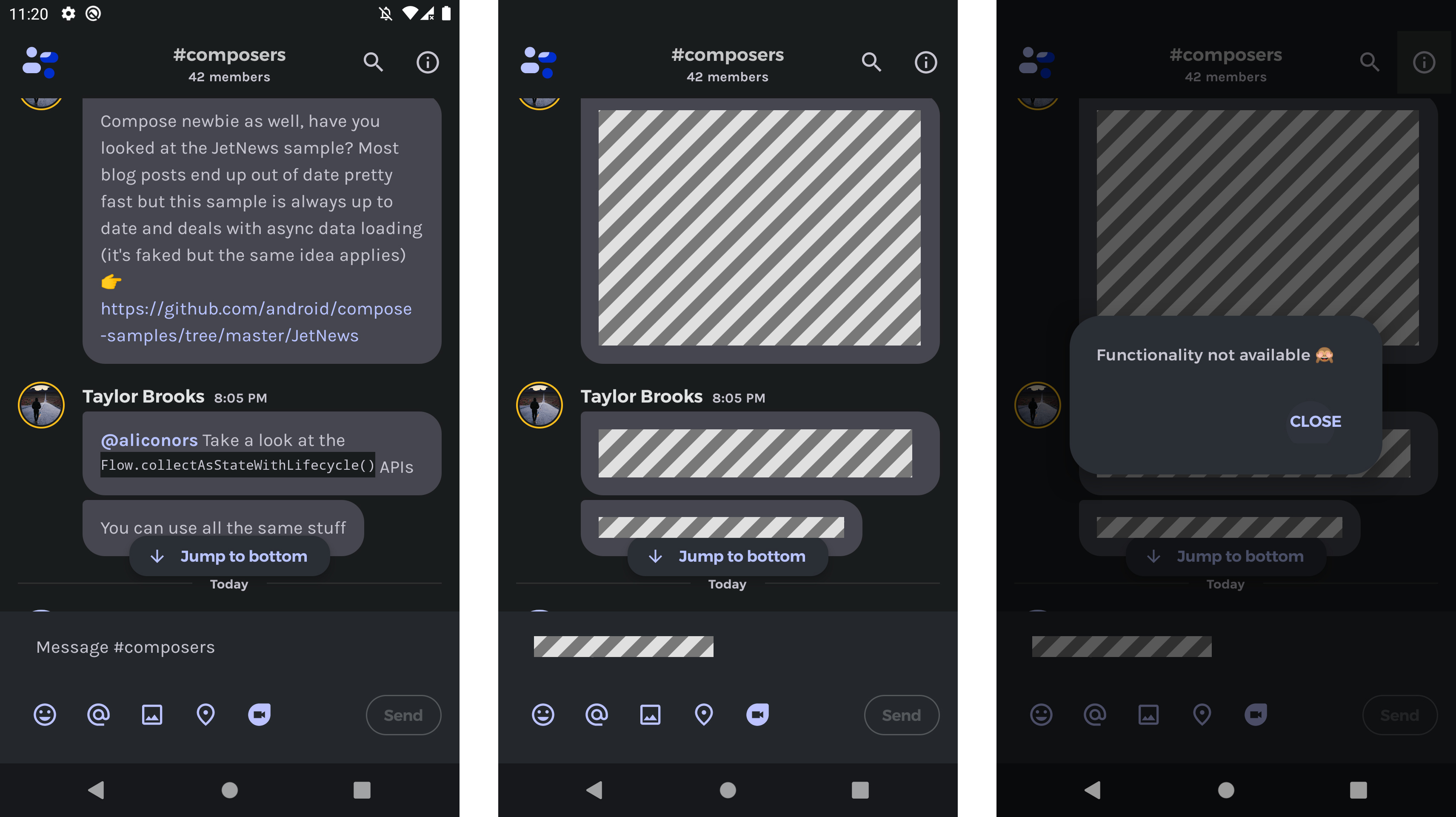In order to protect user privacy, you can configure Smartlook to not record sensitive data.
Currently, there are three methods to handle sensitive data:
Rendering modes
The Smartlook SDK offers three rendering modes to create session recordings. Each rendering mode renders the app screen in a different way. The default rendering mode for the Smartlook SDK is Native (RenderingMode.NATIVE).
When using the Native rendering mode, the SDK can record sensitive data in your application.
The rendering modes available in the Smartlook SDK:
| Rendering mode | What is captured |
|---|---|
RenderingMode.NATIVE | Regularly captures the app screen which the SDK immediately processes to remove sensitive data. The frames are then complied to make the session recording. For more information, see View sensitivity. |
RenderingMode.WIREFRAME | Captures the app using only a wireframe representation of the screen data. No user data is recorded. This is the preferred rendering method for user data security. |
RenderingMode.NO_RENDERING | No content is recorded. |
Setting the rendering mode
To set the rendering mode:
Smartlook.instance.preferences.renderingMode = RenderingMode.NATIVESmartlook.getInstance().getPreferences().setRenderingMode(RenderingMode.NATIVE);Reading the rendering mode
To see what rendering mode the SDK is using:
val renderingMode = Smartlook.instance.state.renderingModeRenderingMode renderingMode = Smartlook.getInstance().getState().getRenderingMode();
Wireframe rendering
You can use wireframe rendering to view how your users use your app, but not reveal any of the elements. This is the preferred method for user data safety.
Examples of wireframe rendering:
Example 1 | Example 2 |
|---|---|
  |   |
Sensitivity
Locally hidden elementsSensitive elements are hidden locally on the device. No sensitive data is transferred to or stored in the dashboard.
You can set sensitivity on elements in your project. Based on how you built your app, choose one of the following:
Sensitivity—Jetpack Compose
Jetpack Compose layout elements can be marked as sensitive using the isSensitivite modifier:
Text(
text = "I'm sensitive text",
modifier = Modifier
.smartlook(
isSensitive = true
)
)
Sensitivity shown on selected texts.
Sensitivity—XML layouts
View sensitivity
You can set sensitivity to any View instance:
sampleView.isSensitive = true|false|nullSmartlook.getInstance().getSensitivity().setViewInstanceSensitivity(sampleView, true|false|null);Any View can be also tagged directly in the XML layout file:
<View>
<tag android:id="@id/sl_sensitivity" android:value="true|false"/>
</View>Class sensitivity
You can also set the sensitivity to all instances of a Class that extends a View rather than setting the sensitivity on a specific View:
SampleViewClass::class.isSensitive = true|false|nullSmartlook.getInstance().getSensitivity().setViewInstanceSensitivity(view, true|false|null);
Default sensitive classesBy default, the
EditTextandWebViewclasses are set as sensitive. To override the sensitivity on the class or instance level, set the class or instance sensitivity tofalseornull.
Sensitivity prioritization
When determining if the View instance is sensitive, the resolution process checks the sensitivity in a strict order.
View instances are not recorded if:
- the
XMLhas thesl_sensitivitytag set totrue. - the sensitivity is set to
true. - the
Classsensitivity is set totrue.
Class hierarchy and sensitivity
Sensitivity set to a more specific class (deeper in the inheritance tree) has higher priority. We will demonstrate this principle in the example using the inheritance tree:
If TextView is set to be sensitive and RadioButton is explicitly set to not be sensitive:
TextView::class.isSensitive = true
RadioButton::class.isSensitive = falseSmartlook.getInstance().getSensitivity().setViewClassSensitivity(TextView.class, true);
Smartlook.getInstance().getSensitivity().setViewClassSensitivity(RadioButton.class, false);These statements are factual if we assume no View instance-specific sensitivity is set:
- All instances of
TextView,Button,CompoundButton,RadioButton,Switch, andToggleButtonwill be sensitive - All instances of
RadioButtonare not sensitive, even thoughRadioButtoninherits from the sensitive classTextView.
Smartlook.instance.preferences.renderingMode = RenderingMode.NO_RENDERINGSmartlook.getInstance().getPreferences().setRenderingMode(RenderingMode.NO_RENDERING)
Rendering modesThe Smartlook SDK provides rendering modes that hide sensitive information by simplifying the rendered screen for recording. This is still useful to you because all user interactions are still recorded, but no sensitive data is rendered. For more information, see Rendering modes.
Automatically-detected touch eventsSome screens display sensitive data through automatically detected touch events. Read more about this issue in secure custom keyboard example.
When the application no longer displays sensitive data, you can set screen rendering mode to NATIVE:
Smartlook.instance.preferences.renderingMode = RenderingMode.NATIVESmartlook.getInstance().getPreferences().setRenderingMode(RenderingMode.NATIVE)Handling WebView sensitivity
If an app uses WebView and you want record them, you need to enable WebView recording. You can enable WebView recording by removing the sensitivity:
WebView::class.isSensitive = nullSmartlook.getInstance().getSensitivity().setViewClassSensitivity(WebView.class, null);If WebView is being recorded, all sensitive elements on the displayed website should be marked as sensitive so that they are hidden. You can mark sensitive elements as sensitive using HTML elements with .smartlook-hide css class:
<div class='smartlook-hide'>
This will be hidden.
</div>All inputs are hidden by default except button and submit. If some hidden inputs should be recorded, they can be marked with .smartlook-show css class:
<input type="text" class='smartlook-show'>Recording masks
In cases where areas of the app shouldn't be recorded, but cannot be defined by a view, you can use RecordingMask:
val recordingMask = RecordingMask(
listOf(
RecordingMask.Element(
Rect(left, top, right, bottom),
RecordingMask.Element.Type.COVERING|RecordingMask.Element.Type.ERASING
)
)
)
Smartlook.instance.recordingMask = recordingMaskArrayList<RecordingMask.Element> elements = new ArrayList<>();
elements.add(
new RecordingMask.Element(
new Rect(left, top, right, bottom),
RecordingMask.Element.Type.COVERING|RecordingMask.Element.Type.ERASING
)
);
RecordingMask recordingMask = new RecordingMask(elements);
Smartlook.getInstance().setRecordingMask(recordingMask);You can only have one Recording mask set at a time, but the recording mask can contain a list of RecordingMask.Element to cover multiple areas at once.
RecordingMask.Element can be one of two types:
| Mask type | How it works |
|---|---|
RecordingMask.Element.Type.COVERING | The area defined by the element Rect is not recorded |
RecordingMask.Element.Type.ERASING | The area defined by the element Rect is recorded even if a previous RecordingMask.Element inside a list was covering the area. |
RecordingMask example
RecordingMask exampleThe following example describes a RecordingMask in action.
On the left:
- The blue box represents a
video_itemelement. - The red box represents a
video_item_imageelement.
On the right:
- The
video_itemelement (blue box) has a.COVERINGvalue. The.COVERINGvalue masks the element in the session recording. - The
video_item_imageelement (red box) has an.ERASINGvalue. The image is visible in the session recording because the.ERASINGvalue cancels the.COVERINGvalue.

